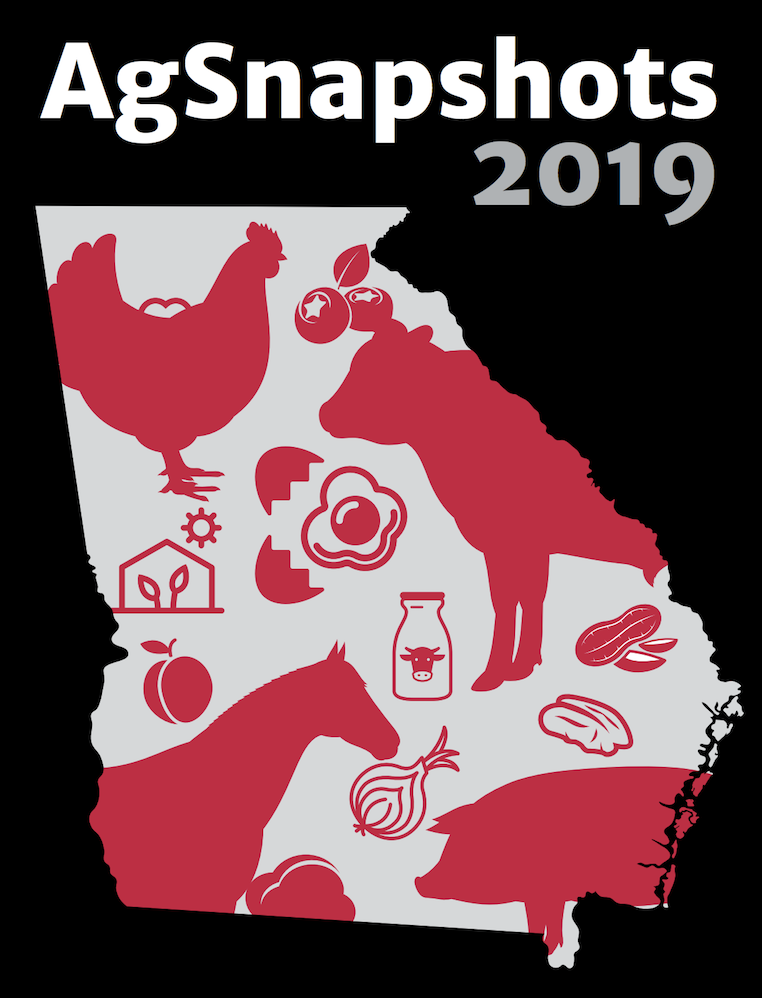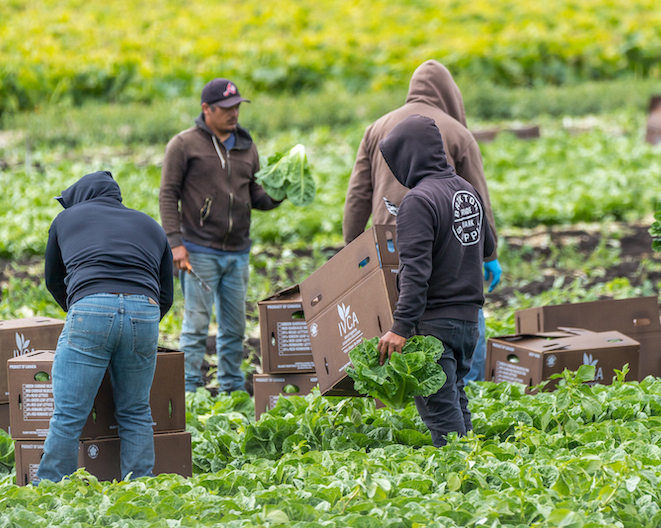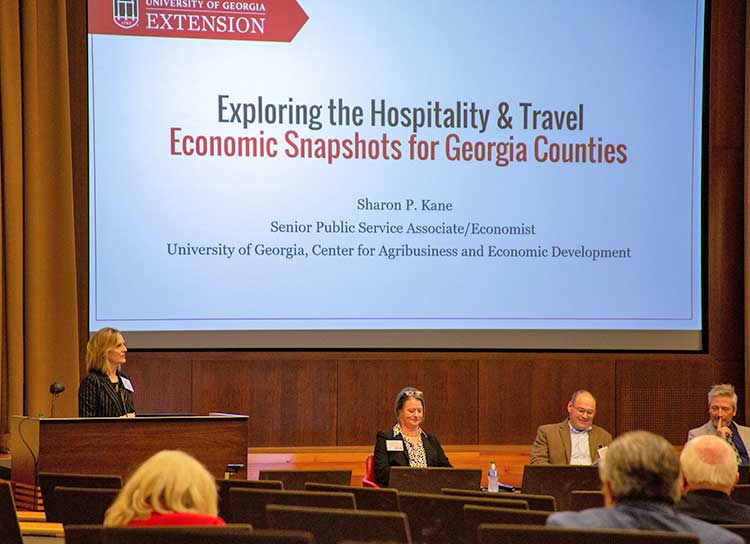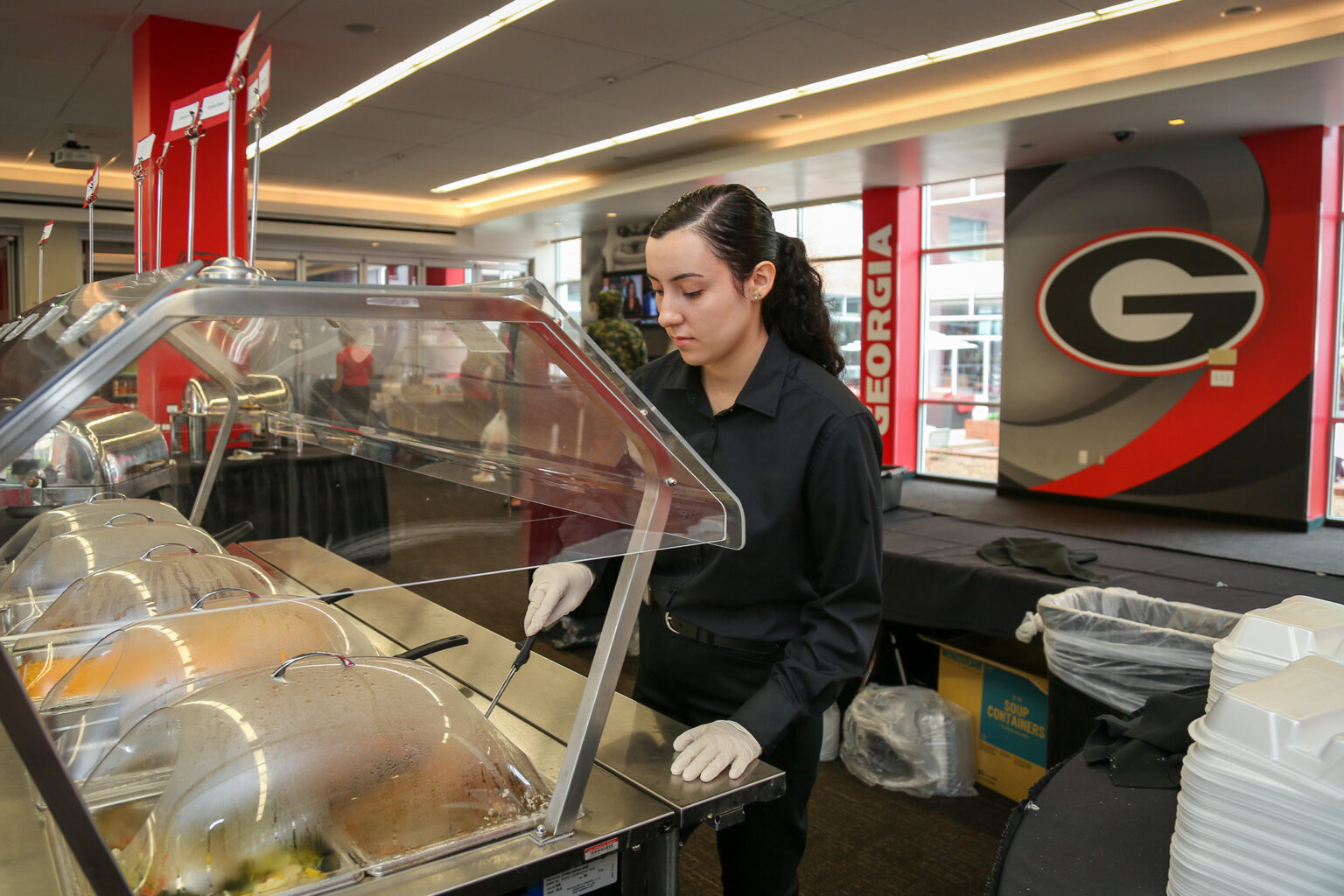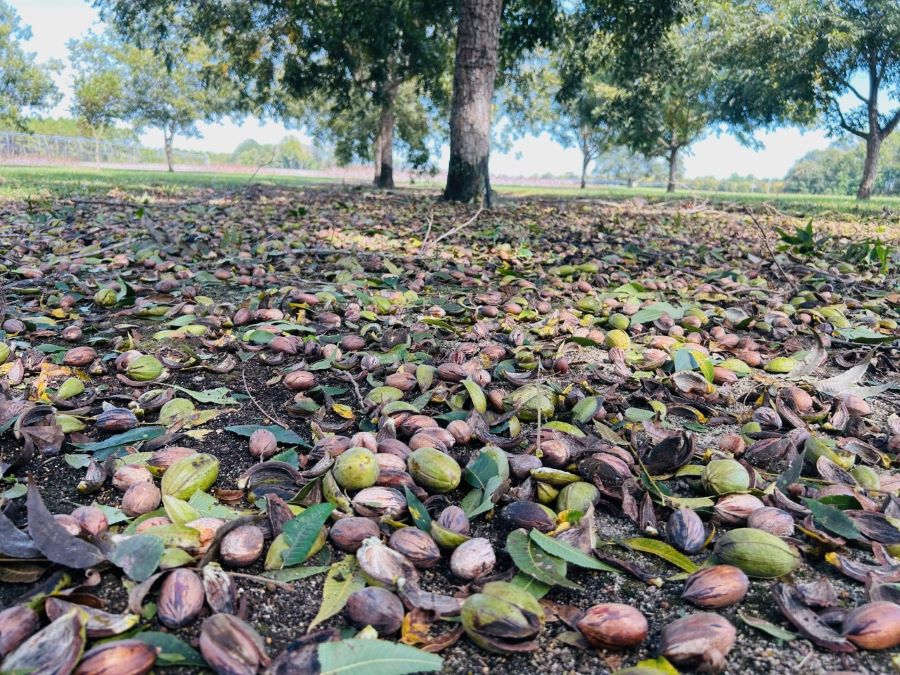Determining the value of Georgia’s agricultural commodities is on University of Georgia agricultural economist Kent Wolfe’s list of job responsibilities. He does it every year, but it’s not a one-man job.
Director of the UGA Center for Agribusiness and Development (CAED), Wolfe gets a lot of help from UGA Cooperative Extension county agents across the state.
“We use a survey tool that we give to every county agent,” explained Wolfe. “We want farmers to populate the survey with what crops they grow, the acreage for those crops and the price the farmer is receiving at the time of sale.
Unlike UGA, Wolfe says that the U.S. Department of Agriculture (USDA) National Agricultural Statistics Service uses the market year price for the whole year to determine farm gate values.
“We look at the crop price at the time of harvest, not the market year average price,” he said. “We have more than 1,100 variables that are used to collect information on 80 commodities. Our farm gate dataset is much more extensive than the data that is available from USDA, which covers about 34 commodities.”
UGA’s farm gate value report figures can vary from those provided by the USDA because they are calculated using the harvest time price, and UGA allows county Extension agents to make acreage and yield adjustments based on their knowledge of the county.
“We have actual boots-on-the-ground people who have the authority to make adjustments. (The Extension agents) know their counties,” Wolfe said. “Collecting this data is also a great task for new agents, as it allows them to interact with producers and establish relationships while they are collecting county-specific data. ”
For example, the Extension agent may know his county’s farmers are getting a higher price for crops.
“The Extension agents know what is going on in their county. It’s where they live,” Wolfe said. “They interact daily with their farmers and this allows them to get a good feel for what is happening in their counties. They visit farmers and see them in meetings every day.”
Karen Stubbs, a research professional with CAED, is responsible for collecting and compiling the data that goes into the UGA-generated Georgia farm gate value report. She collects prices from UGA specialists and acreage and yield data from the USDA. Stubbs and the Extension agents use this data as a baseline.
When the farm gate values for the state are complete, individual county agents can go into the system and generate specialized farm gate reports for their specific counties, Wolfe said.
In Toombs County, Agriculture and Natural Resources Agent Jason Edenfield uses Georgia farm gate value information when he speaks to groups like local civic clubs, the chamber of commerce or the development authority. He has a presentation prepared that focuses on the economic benefit and importance of food and fiber based on Toombs County’s agriculture production.
He also hands out copies of "Ag Snapshots," a pocket-sized book created by CAED that summarizes Georgia’s farm gate values.
The UGA farm gate information is merged with the university’s Early Detection and Distribution Mapping System (EDDMapS) Integrated Pest Management (IPM) program, an online, database-driven system that collects information from crop advisors, county agents and Extension specialists to provide a clear picture of current pest and disease activity.
With the information Extension agents provide for the annual farm gate survey, EDDMapS IPM is better able to target pest and disease information about specific crop issues based on the crops grown in specific counties, said Joe LaForest, associate director of the UGA Center for Invasive Species and Ecosystem Health system, also known as the Bugwood network, and leader of the Integrated Pest Management (IPM) and Forest Health programs.
Since farm gate reports are based on the past, the completed farm gate data is generally released a year after the crop year. CAED has completed the 2017 farm gate values; data collection for the 2018 crop year will be completed by the end of summer.
“This information is shared with the Georgia House of Representatives and the Senate Agriculture Committee, the Governor’s Office and our federal senators and legislators,” Wolfe said. “And, of course, agricultural groups across the state and the general public find it valuable, too.”
The 2017 total farm gate value for Georgia agricultural commodities is $13.7 billion. In 2017, the top five Georgia commodities in order of value were broilers, cotton, eggs, peanuts and timber.
To access the most current Georgia farm gate values, visit the CAED website at www.caes.uga.edu/content/caes-subsite/caed/publications/farm-gate.
The EDDMapS system can be viewed at www.eddmaps.org.

